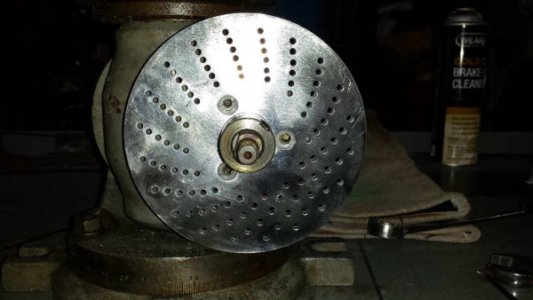- Joined
- Dec 31, 2010
- Messages
- 937
I have a 40:1 worm gear that I am trying to re-purpose to a dividing head. I am to a point in planning for the dividing plates that I will try making myself, however I would like to mount commercial plates if my plan fails. At this point I have no idea of the spacing of the mounting screws for these plates, nor the diameter of the center hole.
If I knew the distance between two of the mounting holes I believe I can make a bracket that will accept commercial plates. The intended O D of the plates 6 inches.
I would certainly appreciate it if some one would take the time and effort to measure the c-c of the mounting holes and the hole size on their plates and advise me of the measurement also the brand of plate if available.
Thanks,
Ray (Rock_breaker)
If I knew the distance between two of the mounting holes I believe I can make a bracket that will accept commercial plates. The intended O D of the plates 6 inches.
I would certainly appreciate it if some one would take the time and effort to measure the c-c of the mounting holes and the hole size on their plates and advise me of the measurement also the brand of plate if available.
Thanks,
Ray (Rock_breaker)


